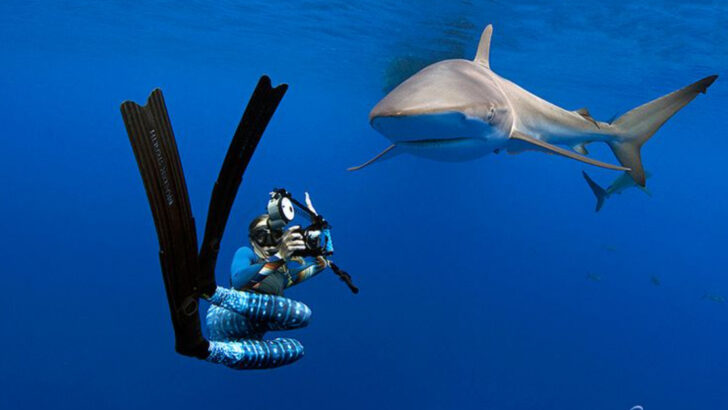This shark does not care what you think of it.
The Galapagos shark is a sleek, ghost-gray predator that cruises volcanic islands like it owns them—and honestly, it kind of does. It’s not just another toothy fish gliding through tropical waters. It’s a shadow with a dorsal fin.
You won’t find it performing tricks in aquariums or chasing fame like its flashier cousins. This shark likes its mystery. It’s the strong, silent type with a taste for remote, raw wilderness.
And just when you think you’ve got it figured out, it reminds you: you’re in its territory now.
Unique Habitat

Unique in its preference for island shelf environments, the Galapagos shark finds its home around oceanic islands. Its habitat spans the tropical waters of the Pacific Ocean, notably around the Galapagos Islands. It thrives in warm, nutrient-rich waters, often patrolling near the sea floor or rocky reefs. These sharks are frequently observed in shallow waters, where they exhibit their curious nature by investigating divers. Interestingly, their adaptability allows them to venture into deeper waters as well, showcasing their versatility within this unique ecosystem. Did you know? These sharks can often be found near volcanic islands, enhancing their mysterious allure.
Dietary Habits
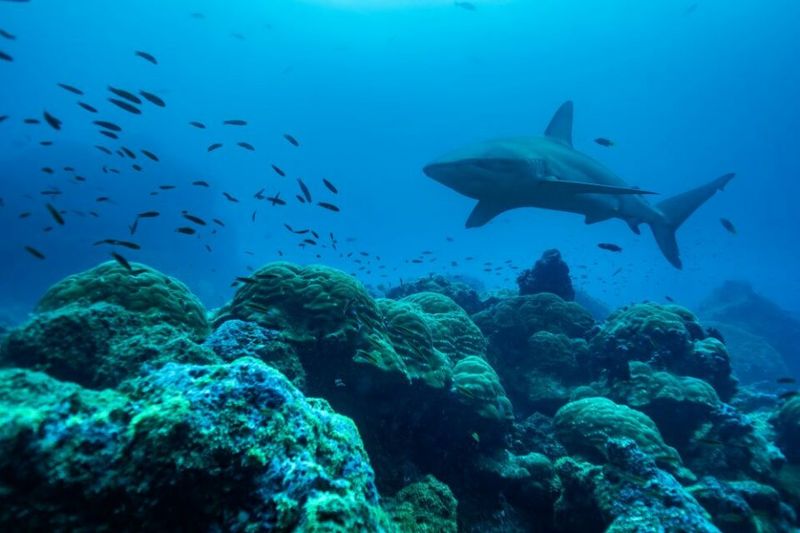
Exhibiting remarkable hunting skills, the Galapagos shark is a top predator in its environment. Its diet consists of fish, squid, and occasionally seabirds. The shark’s keen sense of smell allows it to detect prey from considerable distances, making it a formidable hunter. Interestingly, these sharks utilize cooperative hunting strategies, often forming groups to corner schools of fish. This behavior not only increases their hunting efficiency but also demonstrates their social nature. With razor-sharp teeth and a powerful bite, Galapagos sharks play a critical role in maintaining the balance of their marine ecosystem.
Social Behavior

Galapagos sharks exhibit intriguing social behaviors, often forming small groups that display coordinated movements. These group dynamics are particularly evident during hunting, where teamwork enhances their ability to capture prey. Social interaction is not limited to hunting; these sharks are known to engage in playful activities, showcasing a level of curiosity and intelligence. Observations of their social structure reveal a complex hierarchy, with dominant individuals leading the group. This social organization highlights the importance of cooperation and interaction within their communities, providing insights into their behavioral ecology.
Reproduction and Lifespan
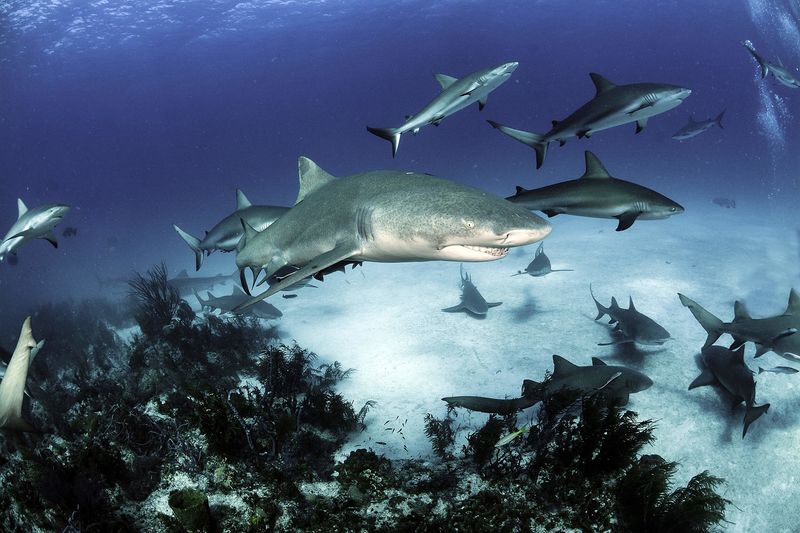
The reproductive habits of Galapagos sharks reveal fascinating aspects of their life cycle. They are viviparous, meaning they give birth to live young after a gestation period of about a year. Females typically give birth to litters of 4 to 16 pups. After birth, the young sharks are independent, receiving no parental care. Galapagos sharks have a relatively long lifespan, often living up to 24 years. The extended gestation period and relatively low birth rate contribute to their vulnerability, emphasizing the need for conservation efforts to protect these remarkable creatures from overfishing and habitat destruction.
Curious Nature
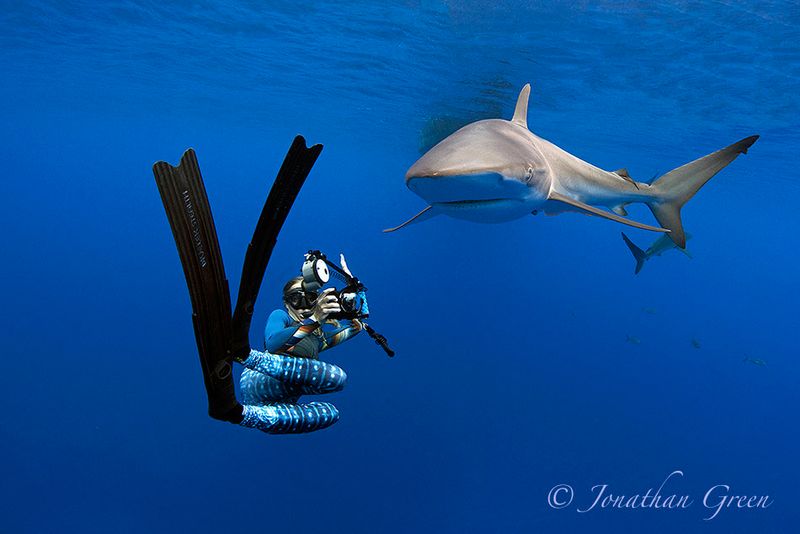
Known for their inquisitive behavior, Galapagos sharks often investigate divers and underwater cameras. This curiosity, though sometimes mistaken for aggression, is a testament to their intelligence and adaptability. Divers frequently report encounters where these sharks swim closely, observing with keen interest. Such interactions offer unique opportunities for studying their behavior in their natural habitat. While their curious nature is captivating, caution is advised, as these predators are still powerful and potentially dangerous. Understanding their behavior helps in fostering coexistence between humans and these magnificent marine inhabitants.
Role in Ecosystem
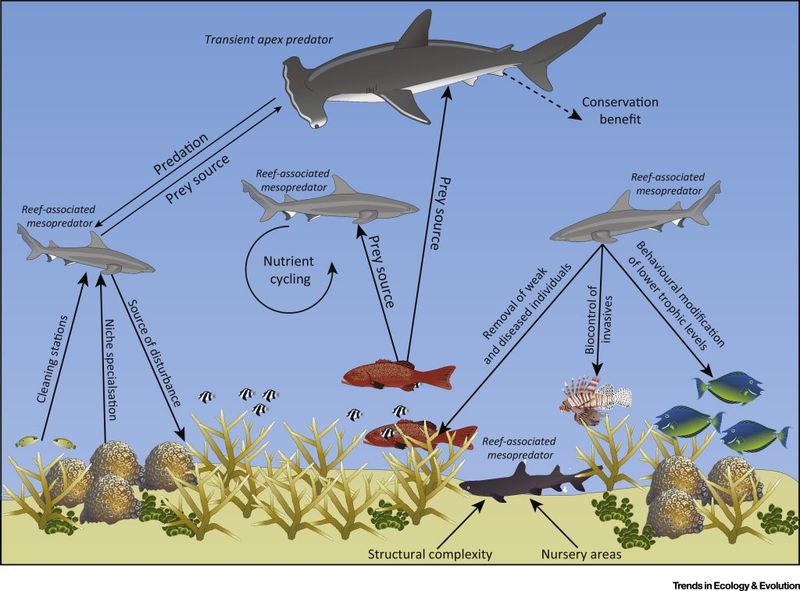
As apex predators, Galapagos sharks play a crucial role in maintaining the health of marine ecosystems. By controlling the population of prey species, they prevent overgrazing of critical habitats like coral reefs. This balance fosters biodiversity, supporting various marine life forms. Their presence indicates a healthy ecosystem, as they require abundant resources and stable environments to thrive. Conservation of these sharks is vital not only for their survival but also for the overall health of the oceanic ecosystems they inhabit. Their role as ecosystem regulators highlights their importance in marine biodiversity.
Threats and Conservation
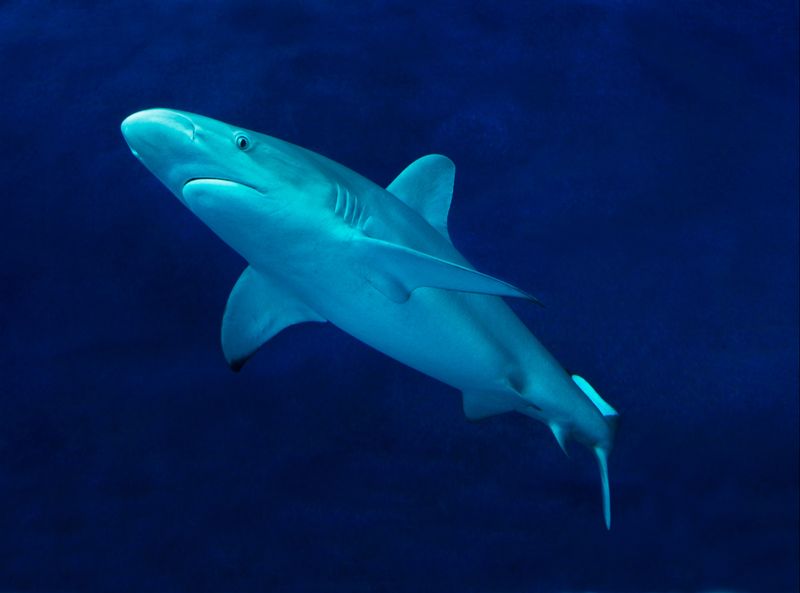
Galapagos sharks face numerous threats, including overfishing, habitat loss, and climate change. Their slow reproductive rate makes them particularly vulnerable to population declines. Conservation efforts are crucial to ensure their survival. Marine protected areas, such as those around the Galapagos Islands, provide safe havens where these sharks can thrive. International agreements and regulations aim to reduce bycatch and illegal fishing practices. Public awareness and research initiatives also play vital roles in shark conservation, highlighting the need to protect these majestic creatures for future generations.
Physical Characteristics
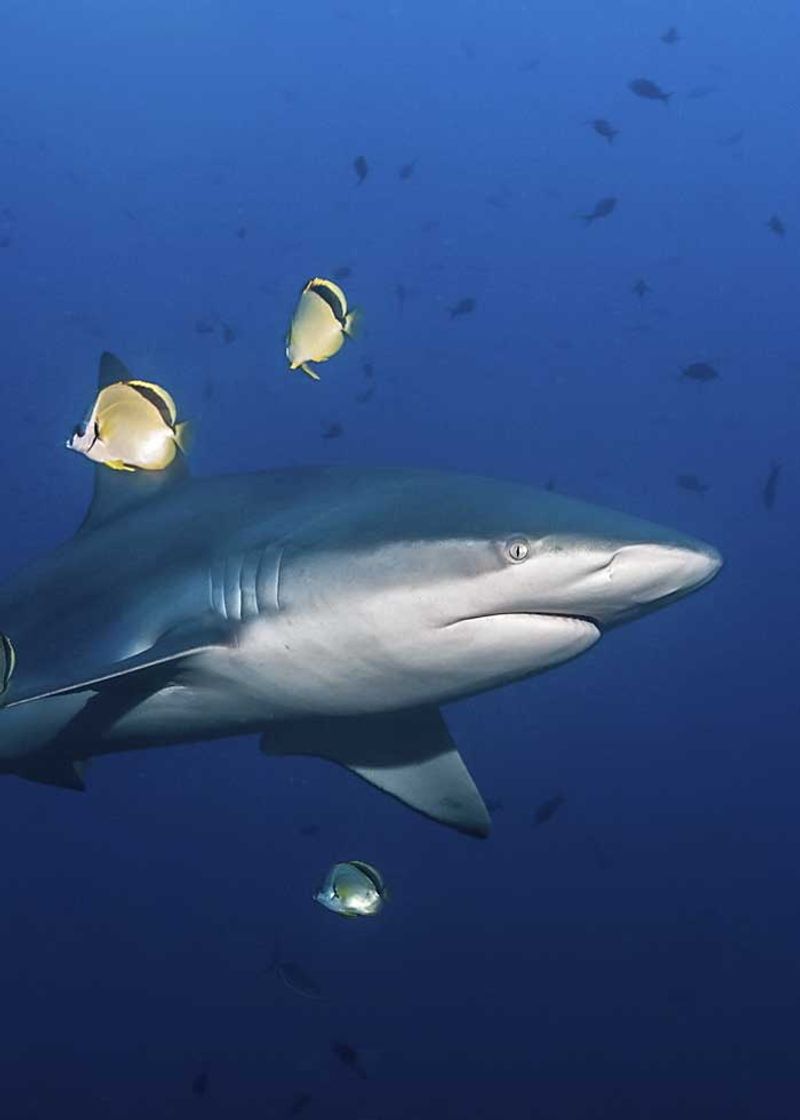
Galapagos sharks are known for their streamlined bodies and impressive size, often reaching lengths of up to 12 feet. Their bodies are built for speed and agility, with a distinctive gray coloration and a white underside. The dorsal fin is prominent, adding to their striking appearance. These physical adaptations enable them to navigate efficiently through their island habitats. Their powerful tails provide the thrust needed for quick movements, essential for hunting and avoiding threats. The Galapagos shark’s sleek design is a testament to its evolutionary success as a top oceanic predator.
Naming and Classification
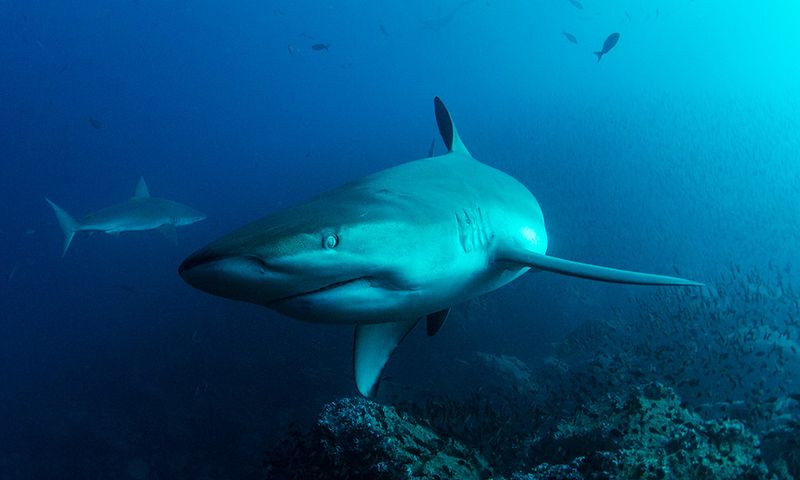
The Galapagos shark’s name reflects its close association with the Galapagos Islands, where it was first identified. Scientifically known as Carcharhinus galapagensis, it belongs to the family Carcharhinidae, which includes other requiem sharks. This classification highlights its evolutionary lineage and ecological significance. The name underscores the importance of the Galapagos Islands as a unique biodiversity hotspot. Understanding the taxonomy of the Galapagos shark provides insights into its relationships with other shark species and its role within marine environments. The shark’s name is a reminder of its connection to this iconic archipelago.
Behavioral Adaptations

Galapagos sharks exhibit behavioral adaptations that enable them to thrive in diverse marine environments. Their ability to shift between shallow and deep waters allows them to exploit various prey resources and avoid competition. This flexibility is key to their survival in the ever-changing oceanic conditions. Observations reveal their strategic use of currents and tides to conserve energy while traveling. Such adaptations showcase their resilience and intelligence, traits that have evolved over millions of years. Understanding these behaviors is essential for conservation efforts, as it informs strategies to protect their habitats and ensure their future survival.
Human Encounters

Encounters between Galapagos sharks and humans are often a highlight for divers visiting their habitats. These interactions offer a glimpse into the marine world, as divers can observe the sharks’ graceful movements from a safe distance. While generally non-aggressive, caution is necessary to ensure safety and minimize disturbance to the sharks. Educational programs and responsible tourism practices promote safe encounters, fostering a deeper appreciation for these marine predators. Respectful interactions contribute to conservation efforts by raising awareness of the importance of protecting sharks and their habitats.
Evolutionary History
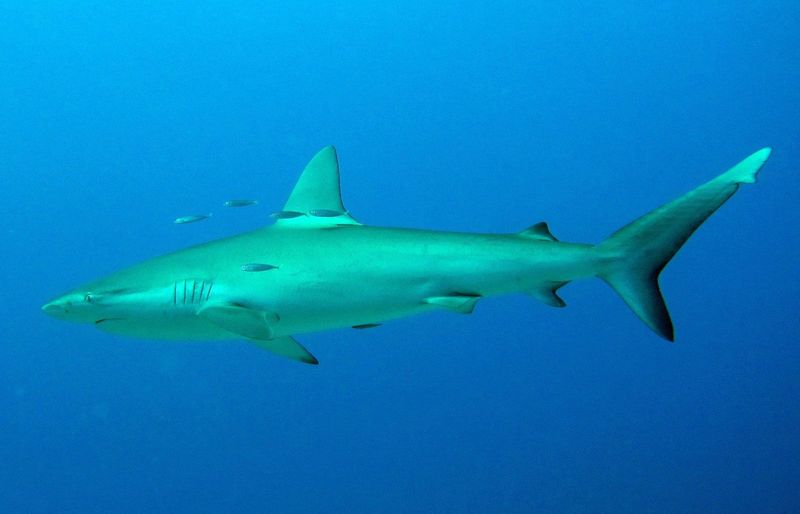
The evolutionary history of the Galapagos shark traces back millions of years, linking it to ancient shark species. Fossil records reveal adaptations that have enabled its survival through significant environmental changes. This deep evolutionary lineage highlights the resilience and adaptability of the species. Scientists study these historical connections to understand the evolutionary pressures that shaped the modern Galapagos shark. Such research provides insights into the broader history of shark evolution and the factors that have influenced their diversification. The Galapagos shark represents a living connection to the ocean’s ancient past.
Cultural Significance
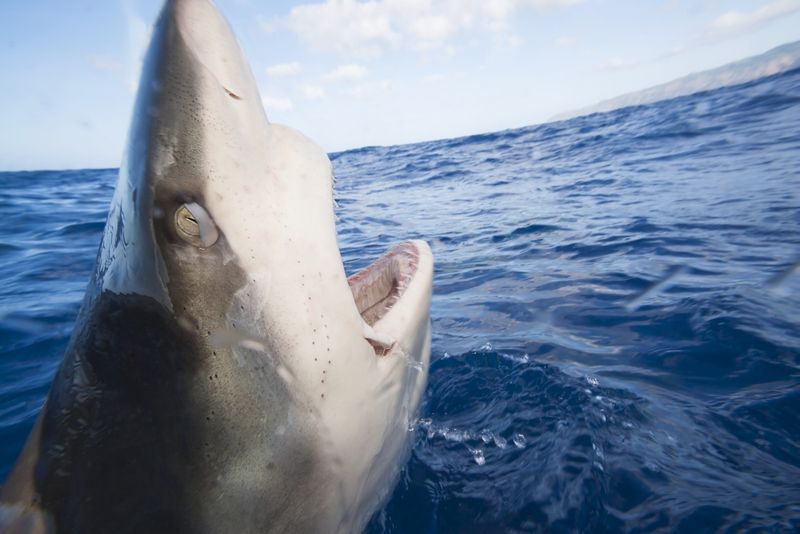
In the Galapagos Islands, sharks hold cultural significance for local communities. They are often featured in folklore and traditional art, symbolizing strength and adaptability. The presence of sharks in these cultural narratives reflects the deep connection between the islanders and their marine environment. This cultural heritage underscores the importance of preserving both the natural and cultural landscapes of the Galapagos. Efforts to protect sharks also contribute to the preservation of cultural traditions, highlighting the interdependence of human and environmental well-being. The Galapagos shark’s role in local culture is a testament to its enduring presence and influence.
Scientific Research
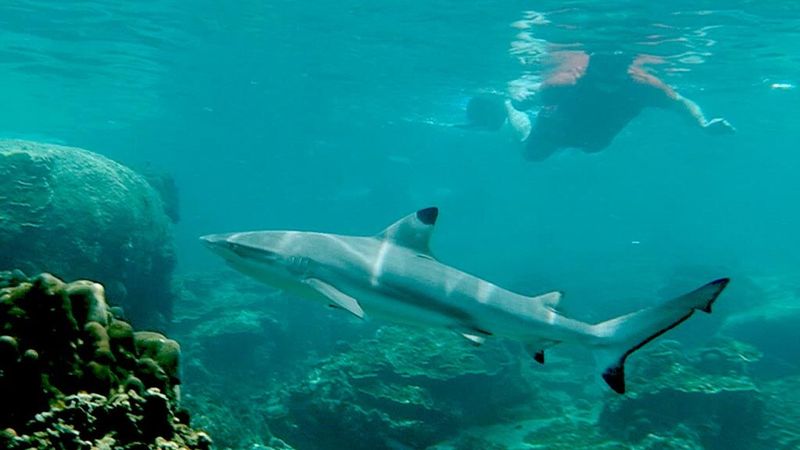
Scientific research on Galapagos sharks provides valuable insights into their behavior, ecology, and conservation needs. Marine biologists use tagging and tracking technologies to study their movements and habitat usage. These studies reveal patterns in migration, social behavior, and environmental preferences. Such research is crucial for developing effective conservation strategies and understanding the broader impacts of environmental changes on shark populations. Collaborative efforts between scientists, governments, and conservation organizations aim to protect the Galapagos shark, ensuring its survival for future generations. The ongoing research highlights the shark’s importance in marine science.

